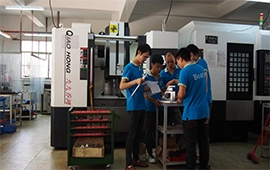Precision grinding, as a high-accuracy surface machining technique, is widely applied across various industries such as mechanical manufacturing, aerospace, and electronics. By using specialized abrasive tools to finely remove material from the workpiece surface, it achieves exceptionally tight dimensional tolerances and surface roughness requirements. Compared to traditional machining methods, precision grinding offers significant advantages, making it a vital process in modern manufacturing.
One of the greatest advantages of precision grinding is its ability to achieve extremely high machining accuracy. Compared to other methods, it can control dimensional tolerances at the micron or even nanometer level. For many precision mechanical components—such as bearings, gears, molds, and optical elements—precision grinding ensures machining accuracy within stringent limits, meeting demanding performance standards. This is especially critical in industries with rigorous precision requirements like aerospace, medical devices, and high-precision instrument manufacturing.
Precision grinding not only provides precise dimensional control but also significantly enhances surface quality. The ground surfaces are smooth and defect-free, with surface roughness reaching extremely low values, often approaching a mirror finish. Improved surface finish substantially reduces friction and wear, thereby extending the service life of components. This makes precision grinding a key process for parts that demand superior surface quality, such as aerospace engines, precision instruments, and automotive engine components.
The precision grinding process is suitable for a wide range of materials, including those with high hardness such as steel, alloys, ceramics, glass, quartz, and cemented carbides. These materials are often challenging to process using traditional methods. Especially for difficult-to-machine materials—like superhard alloys, brittle materials, and high-temperature alloys—precision grinding offers unique advantages by avoiding issues like cracking, deformation, and thermal damage that can occur with conventional cutting techniques.
Precision grinding can significantly enhance the reliability of components. The process effectively removes micro-defects and stress concentration areas on the workpiece surface, allowing ground parts to better withstand external pressures and wear during operation, thereby reducing the likelihood of failure. For precision components operating under high load, high speed, or high temperature conditions, precision grinding extends service life and improves overall equipment reliability.
Precision grinding is not limited to flat or cylindrical shapes but can also handle complex geometries. Applications such as precision internal grinding, contoured surfaces, angled planes, and intricate grooves can all be realized through grinding processes. For precision parts requiring specialized shapes and surface finishes, precision grinding is an indispensable manufacturing technique.
As a highly efficient and accurate machining method, precision grinding holds an irreplaceable position in modern manufacturing. Its advantages in precise control, superior surface quality, and broad material compatibility make it the preferred choice for machining many critical components.


